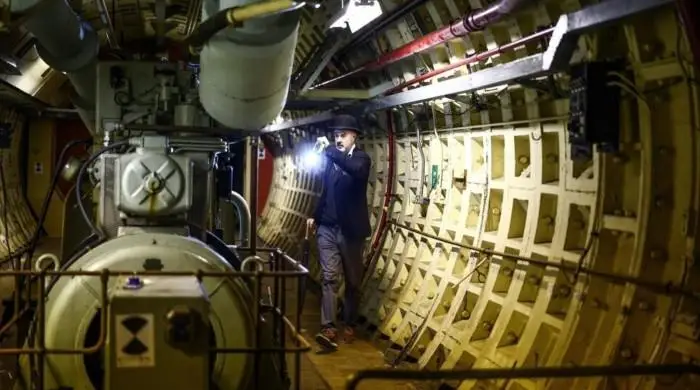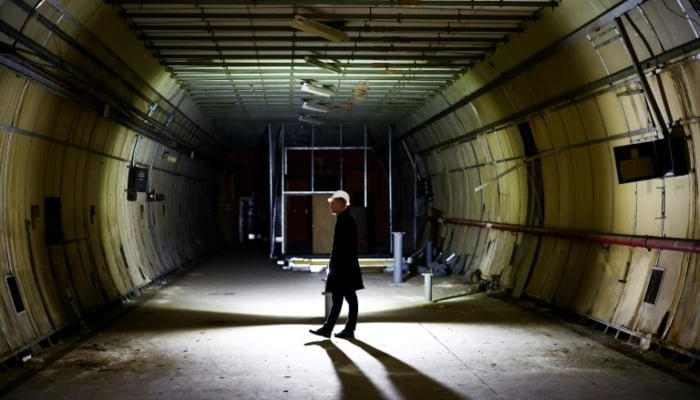LONDON —Beneath a nondescript blue door in central London lies a vast underground network once steeped in wartime secrecy. These tunnels, hidden 100 feet below the bustling streets, were originally designed to shield Britain from Nazi attacks during World War II.
The two main passageways, measuring five to seven meters across, were first reached by stairs and then a lift. “They were built to defend Britain from the Nazis,” explained Angus Murray, who led a small group of reporters through the site.
Murray, an Australian-born entrepreneur, purchased the Kingsway Exchange Tunnels in September 2023 through his private equity firm. The price remains undisclosed. He now plans to transform the one-mile-long (1.6-kilometer) complex into a major tourist attraction by 2028, celebrating London’s wartime heritage.
From Bomb Shelter to Espionage Hub
Originally built as an air-raid shelter during the Blitz, the tunnels later became home to the top-secret Special Operations Executive (SOE) between 1944 and 1945. The SOE, created by Prime Minister Winston Churchill, supported resistance movements across Nazi-occupied Europe.
Separate from MI6, the group is often regarded as the inspiration for “Q Branch” in Ian Fleming’s James Bond novels.
A worker in “The London Tunnels” in London in this undated image. — AFP
After the war, the tunnels stored official documents and served as a potential backup for war rooms. In the 1950s, during the early Cold War, the UK government expanded the site into a highly secure long-distance telephone exchange.
The facility operated the first transatlantic telephone cable, TAT-1, which became crucial for the Moscow-Washington hotline following the 1962 Cuban Missile Crisis.
A Forgotten World Underground
The 8,000-square-meter (86,000-square-foot) site once employed 200 people working deep underground. It housed not only workstations but also a bar, a restaurant with fake windows, and even snooker tables for recreation.
By the late 1980s, telecommunications advances made the tunnels obsolete. British Telecom decommissioned the site, eventually putting it up for sale in 2008.
Today, the space holds only remnants of its past—dusty generators, graffiti, and discarded beer cans left by urban explorers.
Murray, a former Macquarie Group executive who later founded a hedge fund, has pledged more than £200 million to revive the site. He envisions immersive exhibits that draw up to two million visitors a year.
“I think we need to honor the men and women who sacrificed so much to protect our democratic freedoms,” Murray said.

